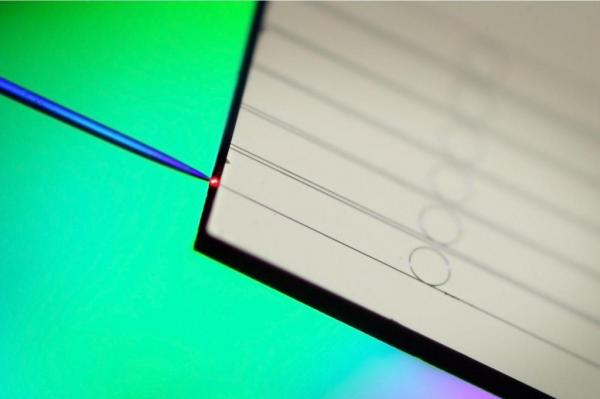“We recorded 100 million distance values per second, corresponding to the fastest distance measurement so far demonstrated,” researcher Christian Koos said.
Scientists in Europe have demonstrated the fastest optical distance measurement on record. The researchers used their new and improved LIDAR technology to measure a speeding bullet.
“We managed to sample the surface structure of the projectile on-the-fly, achieving micrometer accuracy,” Christian Koos, a professor at Karlsruhe Institute of Technology in Germany, said in a news release. “To this end, we recorded 100 million distance values per second, corresponding to the fastest distance measurement so far demonstrated.”
The new LIDAR system’s 3D cameras are comprised of chip-based optical microresonators. The resonators are made from silicon nitride and produce a soliton frequency comb.
Frequency combs produce a spectrum of sharp, equally spaced frequency lines. The lines work like a ruler. The technology is used in a variety of fields, but is most often employed as a sensor capable of measuring the spectral properties of tiny targets.
The generation of frequency combs is typically an energy-intensive process, and the technology often takes up a lot of space. But scientists at the Swiss Federal Institute of Technology in Lausanne, EPFL, have developed a chip-scale light source capable of producing frequency combs.
The technology converts laser light into optical light pulses called dissipative Kerr solitons. The succession of pulses produces a full broadband optical spectrum. The chip-scale conversion process is made possible by silicon nitride microresonsators.
“We have developed low-loss optical resonators, in which extremely high optical intensities can be generated — a prerequisite for soliton frequency combs,” said EPFL professor Tobias Kippenberg. “These so-called Kerr frequency combs have rapidly found their way into new applications over the previous years.”
Scientists have previously used chip-scale frequency comb technology to create smaller, more versatile chemical sensors, as well as high-speed communications systems. Now, researchers have translated the technology for optical distance measurements.
The light source — detailed in the journal Science — could be used to improve satellite technology or the navigational abilities of autonomous drones.












